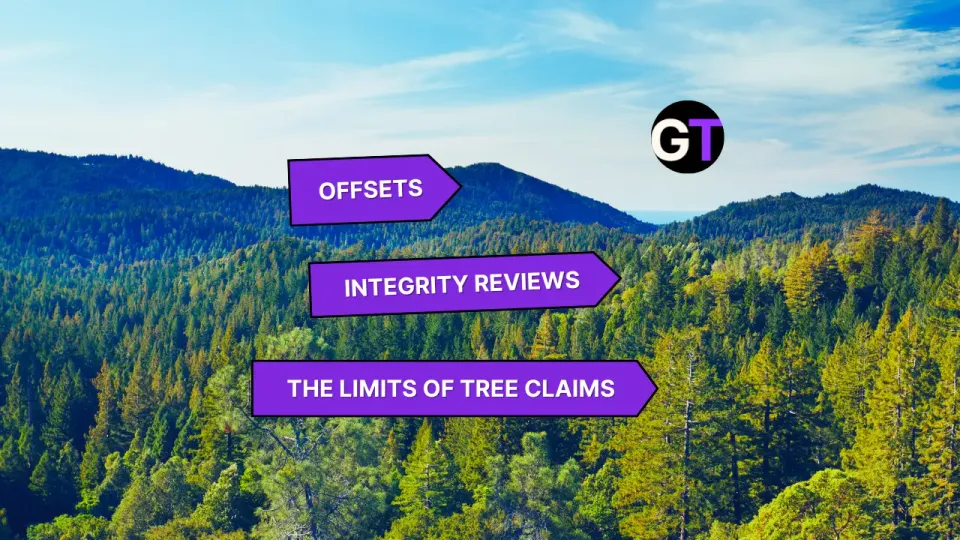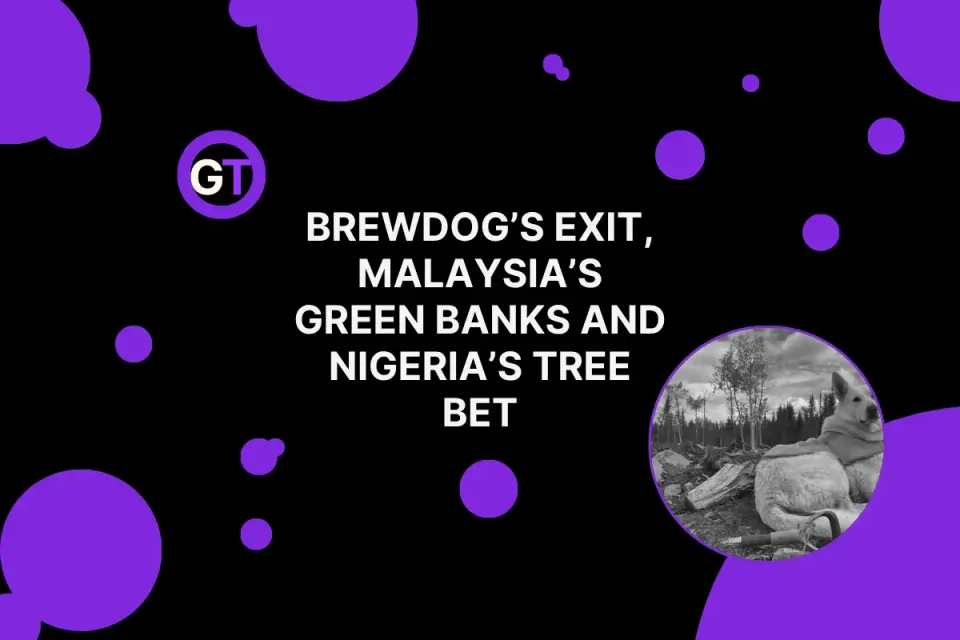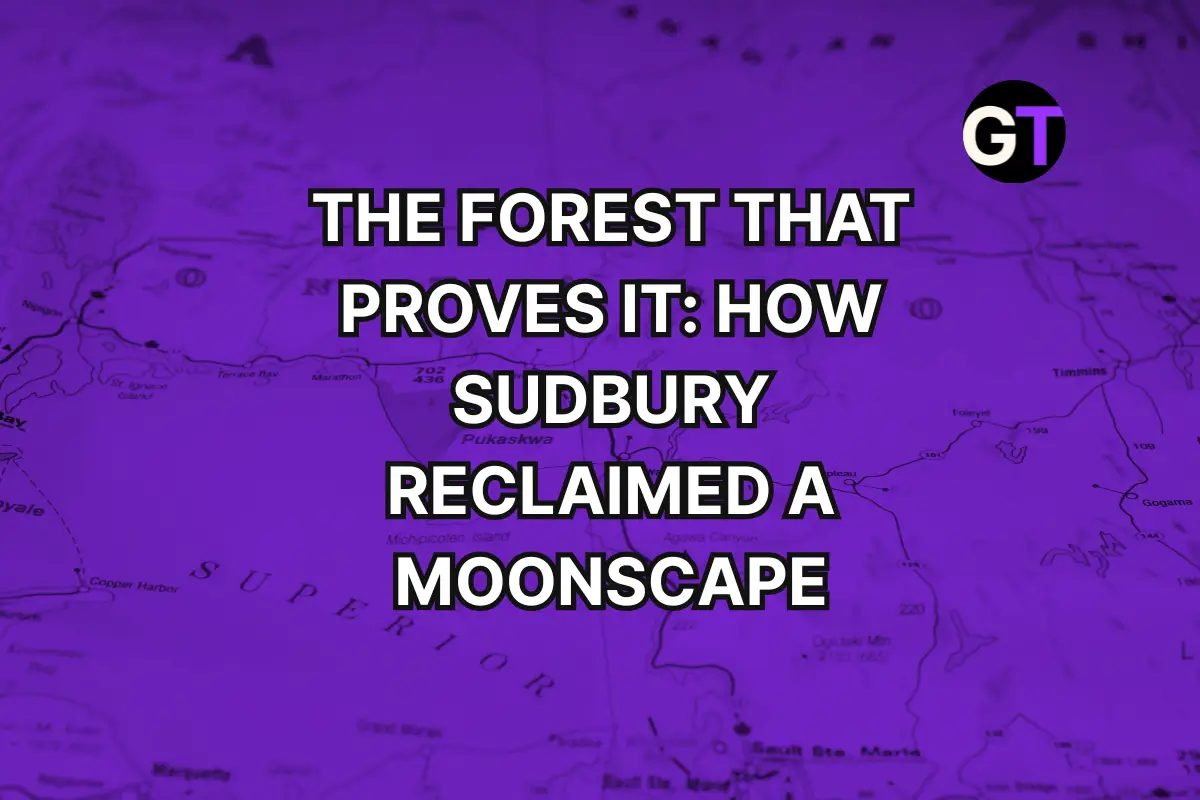This Week In Forest Finance, April 17
Federal funds axed in Oregon, Brazil launches $77M Amazon reforestation, B.C. finds old-growth worth billions—trees meet big money.

Chopped Funding, Choked Roots: Tree Planting Halted in Fire-Scorched Oregon Towns
In a move that’s left local reforestation efforts in the Rogue Valley withering on the vine, the Trump administration abruptly canceled a $600,000 federal grant—slashing $500K in active tree-planting projects meant to restore neighborhoods devastated by the 2020 Almeda Fire. The funding was part of a broader $75 million initiative through the Arbor Day Foundation aimed at planting trees in underserved areas nationwide.
For residents like Eric Dyssegard, that means no shade, no cooling, and a likely $1,000 landscaping bill. And it's not just tree projects on the chopping block—grants for local farmers and climate resilience research are also in limbo, leaving communities to ask: how do you rebuild when the roots of recovery are ripped out?
💬 Can we fight climate disaster when $75 million in green recovery is left blowing in the wind?
👉👉Read more in Ashland.news
$50M for Forests: BTG Pactual TIG, IFC & Conservation International Win Big for Reforesting Latin America
Money really can grow on trees—if it's sustainability-linked. BTG Pactual Timberland Investment Group, the International Finance Corporation (IFC), and Conservation International just snagged Environmental Finance’s 2025 “Sustainability-Linked Loan of the Year” for a $50 million loan package backing one of Latin America's largest private-sector reforestation strategies.
Centered in Brazil’s biodiversity-packed Cerrado, the project aims to restore 135,000 hectares of native ecosystems and develop another 135,000 hectares of FSC-certified commercial forests. But this isn’t your average greenwashing affair: the loan actually rewards the group for hitting real-world climate and biodiversity targets like habitat corridors and watershed protection. Translation: trees, wildlife, jobs—and returns.
💬 Can reforesting the Cerrado turn sustainable finance from buzzword to blueprint for climate action?
👉👉Read more via Yahoo Finance
Mind the (Nature) Gap: How to Close the $942 Billion Shortfall in Biodiversity Funding
The world is nearly $1 trillion short of the investment needed to restore nature and fight climate change. That’s a $942 billion gap standing between us and the goals of the Kunming-Montreal Global Biodiversity Framework. But according to biodiversity consultant Samantha Willis, closing it isn’t just about throwing money at the problem—it’s about redesigning the system. Think: blended finance to de-risk conservation, government-backed tax breaks and subsidies, and one common language for measuring biodiversity outcomes. From the Cali Fund to new accountability frameworks post-COP16 2.0, the tools are on the table. Now it’s about using them—before the clock runs out.
💬 Are blended finance, policy incentives, and global metrics the trifecta that could finally make nature investable?
👉👉Read more in Sustainable Views
B.C.’s Old-Growth Forests: Worth More Standing Than Stumped
A fresh report just dropped some major truth bombs: protecting old-growth forests in B.C. could rake in $10.9 billion in economic benefits over the next century—just by not cutting them down. Conducted by ESSA Technologies, the study compared business-as-usual logging to a conservation-forward approach in the Prince George and Okanagan Timber Supply Areas (which hold about 10% of B.C.’s old growth). Spoiler alert: letting the trees do their thing wins big. The real money-maker? Carbon storage. But the forests also boost tourism, recreation, and even fungi-foraging economies.
Even more staggering, full protection of old-growth in just those two regions could generate $43.1 billion in net economic value. First Nations leaders, tourism advocates, and environmental experts are all shouting the same thing: it’s time for B.C. to walk the walk on its promises to protect these irreplaceable ecosystems.
💬 What’s your take—should we treat old-growth as natural gold mines or keep swinging axes for short-term gain?
👉👉 Read the full report from ESSA Technologies
Brazil’s $77M Amazon Makeover: Carbon Credits, Jobs, and Jungle Regrowth
Brazil just hit "refresh" on the Amazon with a $77 million (R$450M) reforestation blitz called ProFloresta+, aiming to restore 50,000 hectares of degraded rainforest and capture 15 million tonnes of CO₂—about the same as taking 9 million cars off the road. The effort, led by Petrobras and the National Development Bank (BNDES), also promises to create 4,500 jobs and inject much-needed transparency into Brazil’s carbon credit scene.
With public contracts, clear pricing, and a boost from nonprofit partners, ProFloresta+ is setting a new bar for reforestation projects. If all goes to plan, the "Arc of Deforestation" could soon be reborn as the "Arc of Restoration." Now that’s a plot twist we can root for.
💬 Would you buy a carbon credit if it came with rainforest regeneration receipts?
👉👉 Read the press release from Green.Earth
Patch & Varaha Team Up to Supercharge Carbon Removal in Asia
Patch and Varaha just dropped a multi-million dollar mic on the carbon markets, launching a bold new partnership to scale nature-based carbon removal across Asia.
With a portfolio spanning regenerative agriculture, reforestation, and biochar, they’ve already removed 1.5 million tonnes of CO₂ and supported 100,000+ smallholder farmers. One flagship biochar project alone has restored 4,000 hectares of grassland and funneled $2.19M in carbon revenue to 145 rural villages.
💬 Are we witnessing the rise of climate finance with a conscience?
👉👉 Read more from Carbon Herald
LPFA’s £250M Climate Commitment: A Step Forward, But How Transparent Is It?
The London Pensions Fund Authority (LPFA) is allocating £250 million—about 3% of its £8 billion portfolio—into a new Environmental Opportunities Fund managed by Local Pensions Partnership Investments (LPPI). This move supports LPFA's net-zero by 2050 goal, focusing on investments in renewable energy, energy efficiency, and nature-based solutions like reforestation.
While this commitment is commendable, details on specific allocations and impact metrics are yet to be disclose. LPFA has previously emphasized transparency, even launching a dashboard with Tumelo to showcase listed equity holding.
💬 Should pension funds offer more transparency on their climate-focused investments?
👉👉 Read more from Impact Investor
Peru Aims to Become a Carbon Credit Powerhouse—But Can It Deliver?
Peru is making a significant push to attract private investment in reforestation and forest maintenance, positioning itself as a global hub for carbon credits. The government is developing a regulatory framework to facilitate sustainable investments, particularly in the Amazon region. Minister of Economy and Finance José Salardi highlighted that investors view Peru as one of the top five most attractive countries for such investments, with potential transactions reaching up to $20 billion. Notably, the Imperative company has expressed willingness to invest $750 million in reforestation and forest maintenance through the carbon credit market.
💬 Can Peru balance rapid investment with robust environmental safeguards and Indigenous rights?
👉👉 Read more at Pension Policy International
Australia’s Largest Native Reforestation Project to Generate Premium Carbon Credits
Australia is set to undertake its largest native reforestation project, planting 3,000 hectares of native trees in 2025 under the Environmental Plantings (EP) method. This initiative aims to generate high-integrity Australian Carbon Credit Units (ACCUs), which are currently valued at $32.55 per tonne of CO₂ equivalent—significantly higher than the $21 price for generic ACCUs. The project, led by Covalent Land, is part of a broader effort to restore 7,000 hectares over five years, translating to approximately 3 million trees.
💬 How can large-scale reforestation projects balance ecological integrity with carbon market demands?
👉👉 Read more at CarbonUnits.com

Edited by Chris Harris

This work is licensed under a
Creative Commons Attribution 4.0 International License.





